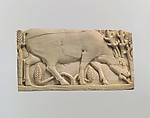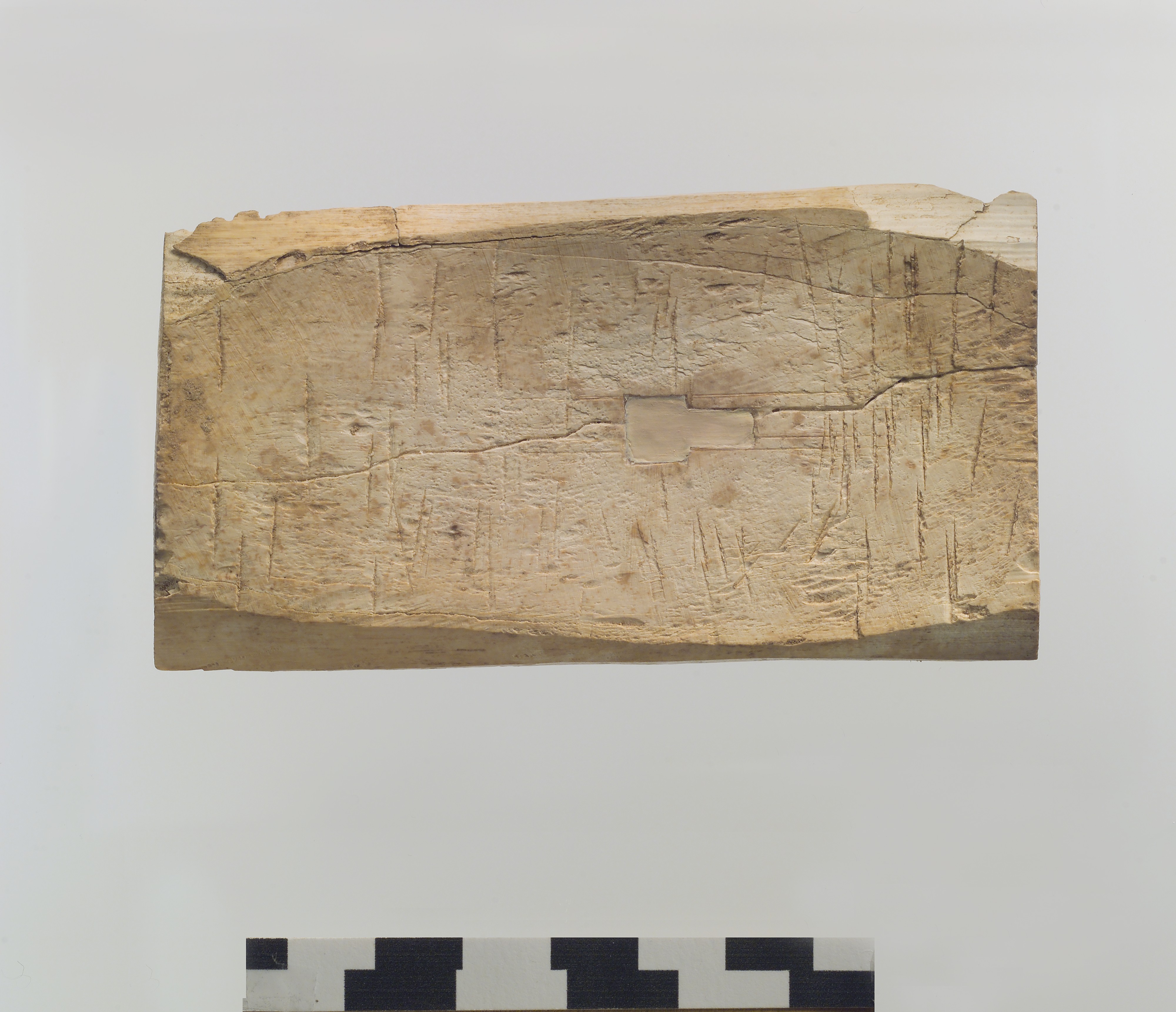Furniture plaque carved in relief with a stag grazing among plants
Not on view
During the early first millennium B.C., ivory carving was one of the major luxury arts that flourished throughout the ancient Near East. Elephant tusks were carved into small decorative objects such as cosmetic boxes and plaques used to adorn wooden furniture. Gold foil, paint, and semiprecious stone and glass inlay embellishments enlivened these magnificent works of art. Based on certain stylistic, formal, and technical characteristics also visible in other media, scholars have distinguished several coherent style groups of ivory carving that belong to different regional traditions including Assyrian, Phoenician, North Syrian and South Syrian (the latter also known as Intermediate).
Several ivories in the Metropolitan Museum’s collection are from the Aramaean town of Arslan Tash, ancient Hadatu, in northern Syria just east of the Euphrates River, close to the modern Turkish border. French archaeological excavations at the site in 1928 revealed city walls and gates in addition to a palace and temple that were built when the Neo-Assyrian king Tiglath-Pileser III (744-721 B.C.) turned the town into a provincial capital and military outpost. During the excavations, over one hundred ivory furniture inlays that can be attributed to the South Syrian and Phoenician styles were found in a building near the palace. One piece bears a dedicatory inscription in Aramaic to King Hazael, mentioned in the Bible, who ruled Damascus during the second half of the 9th century (ca. 843-806 B.C.), suggesting that this collection of ivory furniture inlays could have been taken by the Assyrian state as tribute or booty from Damascus. The Arslan Tash ivories share an amalgamation of Egyptianizing motifs typical of the Phoenician style and forms characteristic of North Syrian art that may indicate a South Syrian or Damascene origin of this group. Today, these ivories are housed in museums in Paris, Aleppo, Jerusalem, Karlsruhe, and Hamburg, as well as The Metropolitan Museum of Art.
This rectangular plaque is carved in low relief and bordered by a thin frame on three sides. It depicts a large, antlered, grazing stag in a landscape of stylized plants. The plaque can be attributed to the South Syrian style, expressed by a combination of elements from North Syrian art, such as the large, heavy body of the stag filling the space of the plaque, with elegant, flowing lines characteristic of Phoenician artistry. The animal lowers its head, opens its mouth, and nibbles on vegetation. Stylized plants terminating in incised fronds grow behind, in front of, and beneath the stag. A mortise cut into the roughened back of the plaque indicates that it was probably made to receive pegs for insertion into a piece of furniture.
Due to rights restrictions, this image cannot be enlarged, viewed at full screen, or downloaded.
This artwork is meant to be viewed from right to left. Scroll left to view more.



